Many of us want to eat more whole grains but are intimidated by how to cook them. Don’t be! It’s not that different from what you do for rice. All you need to know are the correct grain-to-water ratio and the simmering time, which we’ve provided in a handy chart that covers barley, buckwheat, oats, quinoa, rice, and more. Plus, find some great grain recipes!
Ready to discover the world of whole grains? They are low in calories, healthy, filling but also it’s easy to prepare one big stockpot in advance. Then, you can add goodness and texture to your soups, salads, and meals throughout the week.
Many grains are interchangeable so you can add interest to some of your regular recipes. If you decide to eat a little less meat each day for your health (and the health of the planet), this is also a good time to add plant-based whole grains to your diet.
It’s really not hard once you know the basics. You put the grains and water in a pot and cook on the stovetop! What you need to know is the grain-to-water ratio which we provide in the chart below. The cooking times can vary, too (also indicated in the chart).
How to Cook Grains
- Remember to use a heavy saucepan with a tight-fitting lid.
- Rinse the grains thoroughly.
- See the grain-to-water ratios in the chart below.
- Bring the water to a boil, add the grain, and return to a boil.
- Reduce the heat, cover, and simmer for the indicated time.
- Once all the water is absorbed, fluff the grain with a fork, replace the cover, remove from the heat, and let sit for about 15 minutes.
- When cooking grains for salads, reduce the cooking times slightly so they retain a chewy texture.
Grain Guide
| GRAIN |
USES |
TO COOK |
| Amaranth |
Caution: This grain becomes sticky when cooked. Mix it with corn, scallions, and cooked pinto beans. Do not salt until thoroughly cooked. |
1 cup amaranth to 2–1/2 cups water; simmer 25 to 30 minutes. |
| Barley, pearled (pot) |
Lightly milled to retain all of the germ and at least 2/3 of the bran, barley can be used in salads with red onions, cucumber, and feta and in soups, stews, and chilies. Try barley as a stuffing for peppers, tomatoes, or poultry and in low-fat “meat” loaf |
1 cup barley to 3 cups water; simmer 45 to 60 minutes. |
| Buckwheat groats (kasha) |
Not part of the wheat family, buckwheat can be eaten by many on a wheat-free diet. It can be roasted in a skillet with an egg for extra flavor. Cook with noodles as a stuffing for cabbage, or serve with squash. |
1 cup groats to 2 cups water; simmer 20 minutes. |
| Bulgur (quick-cooking) |
This is cracked wheat that has been partially cooked and dehydrated. It is most often combined with olive oil, garlic, mint, parsley, paprika, and lemon to make tabbouleh. Try it with pine nuts, cinnamon, and lemon as a stuffing for tomatoes or green peppers. |
1 cup bulgur to 2 cups water; simmer 5 minutes. Or combine 1 cup bulgur with 1-1/2 cups boiling water and let stand for 20 minutes. |
| Couscous |
These quick-cooking wheat berries have been ground, steamed, and dried to form tiny pellets. Use as a light bed for spicy vegetables and stews or in a risotto with curried vegetables. |
1 cup couscous to 1–1/2 cups water; simmer 5 minutes. |
| Millet |
This is a mild, digestible grain often used by people on wheat-free diets. Serve as a bed for sauteed vegetables and chickpeas, as a stuffing with applesauce, or sprinkled into soups, stews, or risotto. |
1 cup millet to 3 cups water; simmer 20 to 25 minutes. |
| Oats, rolled |
Eat as cereal (try adding currants and toasted nuts), or use in grain burgers, in cookies and quick breads, and as a thickener in soups. |
1 cup oats to 3 cups water; simmer 10 to 15 minutes. |
| Quinoa |
Light, nutty flavor and higher in protein than other grains, quinoa (actually the fruit of an herb) is excellent in grain salads, as a stuffing for zucchini or tomatoes, or in enchiladas or fajitas. It is also great with salsas and chutneys. |
1 cup quinoa to 2 cups water; rinse several times before cooking; simmer 20 minutes. |
| Rice |
Rice is a wonderfully versatile grain, good plain, added to vegetable casseroles, and used to stuff peppers and tomatoes. Use short-grain, which is sticky, for puddings and layered vegetable dishes; use medium-grain as a side dish and in Korean, Japanese, and Italian dishes; use long-grain for stews, curries, paellas, and salads. |
1 cup rice to 2 cups water; simmer 15 to 20 minutes for white rice; 40 to 60 minutes for brown rice. |
| Rice, wild |
This seed of aquatic grass is high in B vitamins. Combine with other grains, use with smoked turkey as a salad, or serve with apples and squash. |
1 cup wild rice to 3-1/2 cups water; simmer 60 minutes. |
| Wheat berries |
Combine cooked, hard red winter wheat berries with bean sprouts, carrots, tamari, sesame oil, and scallions for salad; or blend into stuffings with celery, mushrooms, thyme, and sage; or serve as a side dish with butter, salt, pepper, and chopped fresh parsley |
1 cup wheat berries to 3 cups water; simmer 1-1/2 to 2 hours. Do not salt. |
Tip: If you are not eating the grains all at once, consider spreading them on a baking sheet before you put them in the refrigerator so they dry out. This avoids mushiness and gumminess. Then store in an airtight container in the fridge.
Now see these wonderful grain recipes:
Whole Grain Recipes
Farro, an ancient grain, is cropping up on menus everywhere and can be found in grocery and health food stores. Many compare it to spelt, though they’re in fact different grains—farro is nuttier and more flavorful. Give the grain a try in this healthy Farro Salad With Basil and Feta.
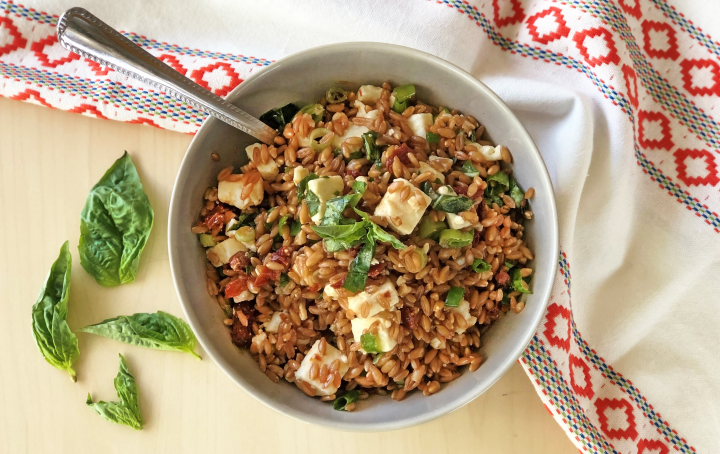
Lentil soup makes such an easy and economical dinner. It’s also a tremendous time-saver. Cooked lentils will keep in the refrigerator 4 to 5 days and can be frozen up to 6 months.
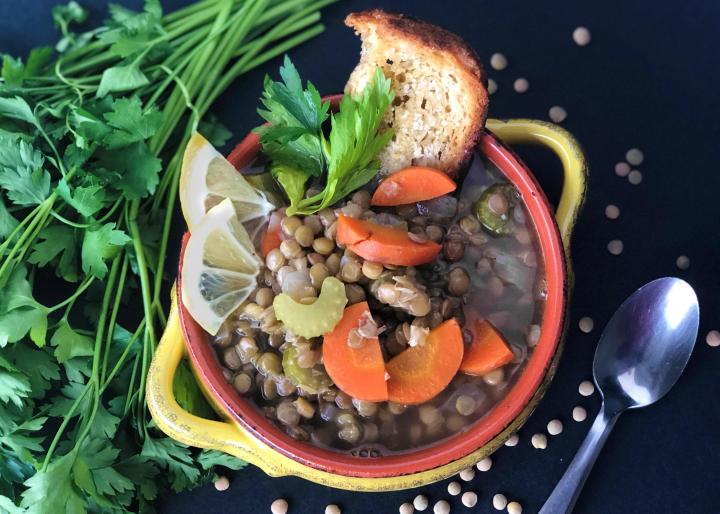
This pearl couscous salad with chickpeas, dried cranberry, oranges, and feta has a delightful mix of textures. Eat hot or cold. Make as a salad or a side that brightens up a basic roast chicken for a flavorful dinner.
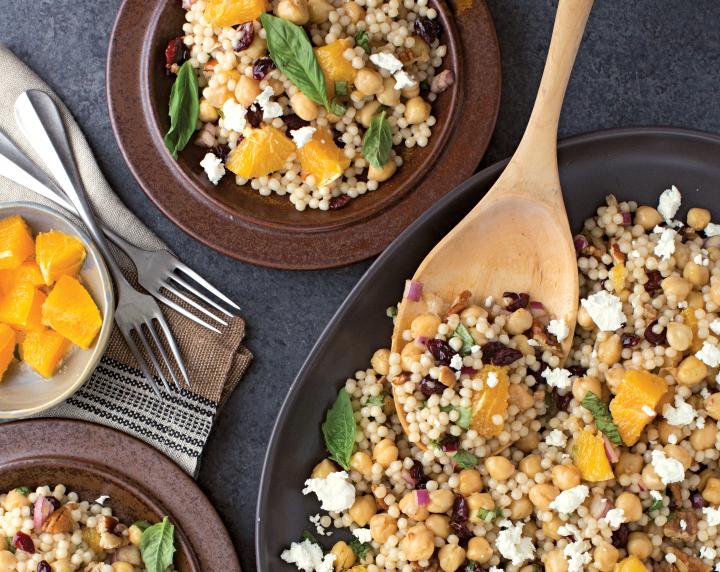
Try this healthy grain chicken salad! Granny Smith apple, red grapes, sliced fennel, and scallions add a sweet crunch. Buy a rotisserie chicken to avoid having to cook and heat up the kitchen.
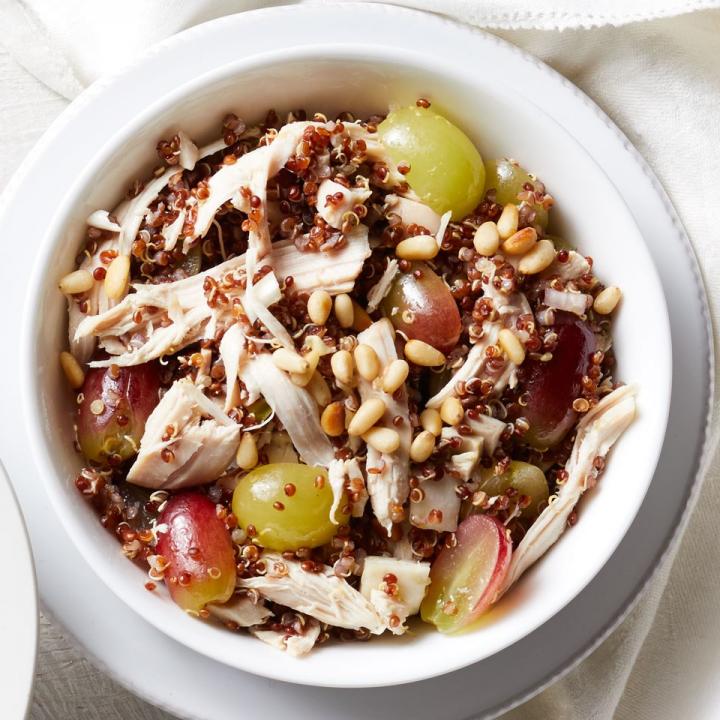
This is simple and satisfying Beef and Barley Soup is a bowl full of comfort, packed with protein and whole grains.
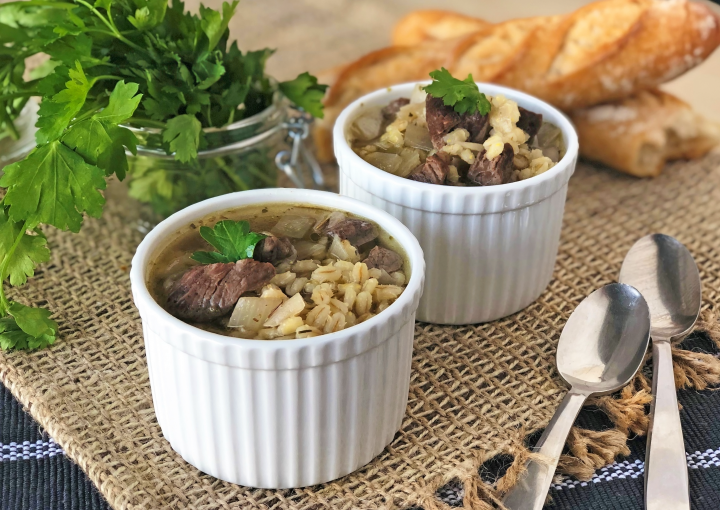
This recipe comes from our editor-in-chief’s wife, Sally. She wanted to introduce grains into the family’s diet, so she concocted this simple and delicious bulgur salad.
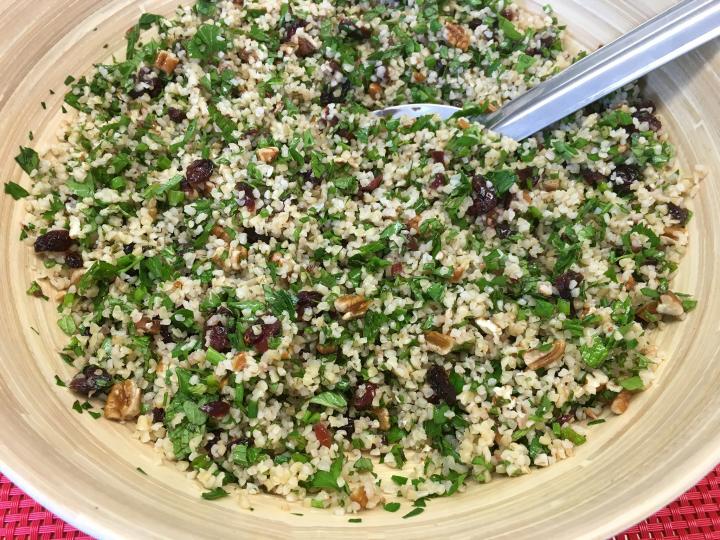
This quick and easy stir-fried rice comes together in no time. You can substitute any protein for the shrimp, or use brown rice instead of basmati rice.
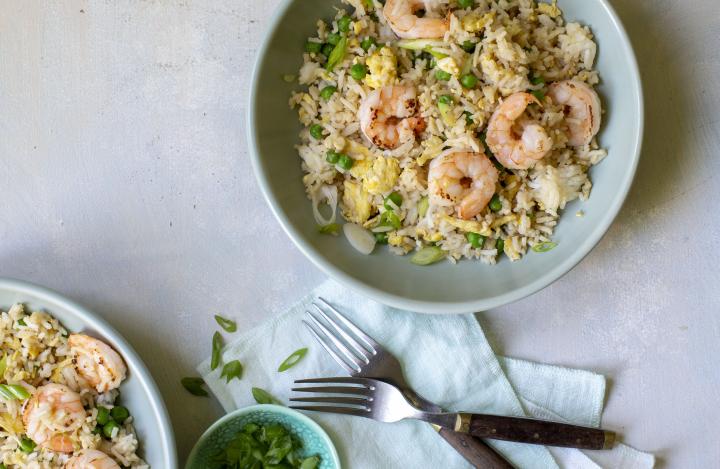
Explore more cooking with grains in our post, “You Gotta Love Lentils.”
















